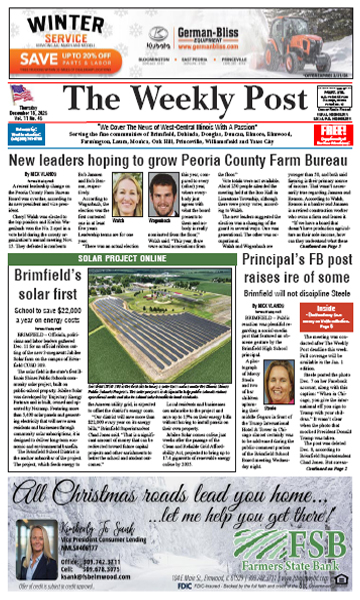Of course it couldn’t just rain. After nearly six weeks without measurable precipitation, Mother Nature had to flex her fury last Thursday, bringing much-needed rain but also bringing down tree limbs and power lines.
Then she just kept the faucets open, switching the fear from drought to flood in some spots (like my basement).
It’s a tradeoff we had to take.
The difference following that first downpour was immediate. Moments after the rain stopped, crops looked better, humidity returned and ground was once again workable.
The last item was as important as the first for me, since we are in that sweaty time of summer when long hours are spent battling prickly foes.
Despite the drought, thistles have been rearing their pretty/ugly flower heads for over a week. But with ground like concrete, the only option had been to spray herbicides or to chop thistles down.
That changed last Friday morning, when a worrisome patch of Canadian invaders was dispatched fairly quickly by digging and pulling the prickly plants out of still-moist soil. With every pull, a thistle pricked my hand through a hole in my gloves – and made me curse scheduling miscues that have haunted one of our two restored native wetland prairies.
Hey, you give Matt Goedecke and the folks at Nutrien Ag Solutions a chance to treat a field and they will slobberknock weeds. Plant prairie seeds after you harvest corn or beans, and the native plants have a decent chance of gaining the upper hand.
That’s what we did on our prairie north of French Creek and the results have been much more satisfying. Fewer weeds means less frustration.
Unfortunately, thistles are just one issue plaguing our smaller south prairie, where weeds had a full growing season to gain a hold, even though we planted a thick stand of millet and Kelly Seed’s Champion Buck Mix during the gap year.
Heading into this third summer of establishment, prairie plants should be booming but are still struggling to outpace weeds and the Kelly Seed mix of clover, alfalfa and chicory. That despite two summers of mowing and plenty of burning by my pyro wife. While alfalfa, chicory and some clover are tolerable, I lose sleep over cocklebur, horseweed and thistle.
So Friday was deeply satisfying, mostly because 1.5 inches of rain should keep trees alive and give row crops a chance to produce. But it also allowed for the most effective form of thistle control there is: digging the damned things out of the ground.
While spray is effective, it also kills prairie plants and leaves open areas for weeds to invade. That’s one way cocklebur invaded the south prairie. And most herbicides I’ve used don’t kill all of a thistle’s roots.
Merely chopping down thistles is not good enough, either, because you leave seeds behind. Anecdotes about people who bag thistle seedheads to remove them from a field once made me think, “Crazy.” No longer. Friday’s infested area is one where I chopped and left lay plenty of thistle last year. I also sprayed several plants, thinking that would do the trick. Now seedheads leave the field in a bucket.
People who say “work smarter, not harder” have it wrong when it comes to thistle in prairie. The surest way to victory is also the sweatiest. After a few more months of digging thistle, mowing cocklebur and another spring burn, I’m optimistic the prairie will gain control. Patience is a key.
Besides, what better way is there to celebrate a drought-breaking rain than to get soaked head to toe and covered in mud while dodging bees in a vanquished thistle patch?
Contact Jeff Lampe at (309) 231-6040 or jeff@wklypost.com







